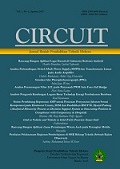Pengaruh Penerapan Model Pembelajaran Kooperatif Tipe Jigsaw Terhadap Hasil Belajar Siswa Pada Mata Pelajaran Teknik Instalasi Penerangan Listrik Rumah Sederhana Di SMKN 1 Darul Kamal
DOI:
https://doi.org/10.22373/crc.v2i2.3699Keywords:
cooperative learning, jigsawAbstract
This research is motivated by the low learning outcomes of students in subjects Simple home electric lighting installation techniques, this is because the learning process is still teacher-centered. This study aims to reveal differences in student learning outcomes between jigsaw cooperative learning models with conventional models in subjects of simple home electric lighting installation techniques at SMK 1 Darul Kamal and to improve student learning outcomes. The research method used was Pre-Experiment with the research subjects of the 11th grade students of TITL SMKN 1 Darul Kamal consisting of 1 class, students were divided into 2 groups, namely the experimental group and the control group. From the results of data analysis based on the results of the t-test shows that Ho is rejected based on the significance value <α = 5% or 0.05, in the column t-test for equality of means we see in the column "sig. 2 tailed "with Equal variances assumed, the variance similarity test was obtained that both control and experimental groups had the same variant. Value "sig. 2 tailed "that is: 0.00 then it can be decided that Ho is rejected because the sig value is 0.00 <α = 0.05, so it can be concluded at the significance level (α) = 5% the control group and the experimental group do not have the same average value. So that the truth is that there are significant differences in student learning outcomes of the experimental group using the Jigsaw cooperative learning model compared to the control group students who did not use the jigsaw cooperative learning model.Downloads
Published
2018-11-04
Issue
Section
Articles
License
Authors who publish in CIRCUIT: Jurnal Ilmiah Pendidikan Teknik Elektro agree to the following terms:
- Authors retain copyright and grant the journal right of first publication with the work licensed under a Creative Commons Attribution-ShareAlike 4.0 International License (CC BY-SA 4.0) that allows others to share and adapt the work with an acknowledgement of the authorship and initial publication in this journal
- Authors are able to enter into separate, additional contractual arrangements for the non-exclusive distribution of the journal's published version of the work (e.g., post it to an institutional repository or publish it in a book), with an acknowledgment of its initial publication in this journal.
- Authors are permitted and encouraged to post their work online (e.g., in institutional repositories or on their website) prior to and during the submission process, as it can lead to productive exchanges, as well as earlier and greater citation of published work. (See The Effect of Open Acces)

